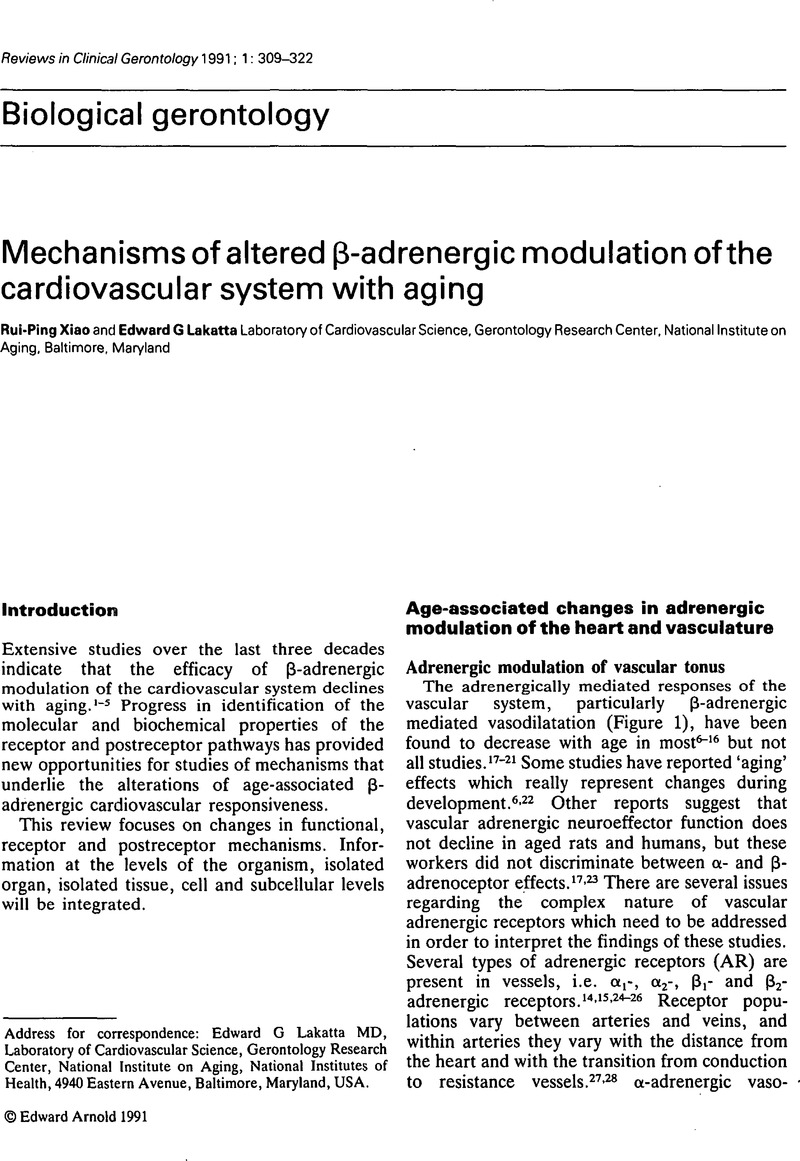Crossref Citations
This article has been cited by the following publications. This list is generated based on data provided by Crossref.
XIAO, RUI‐PING
and
LAKATTA, EDWARD G.
1992.
Deterioration of β‐Adrenergic Modulation of Cardiovascular Function with Aging.
Annals of the New York Academy of Sciences,
Vol. 673,
Issue. 1,
p.
293.
Fairweather, DS
1992.
Aging of the heart and the cardiovascular system.
Reviews in Clinical Gerontology,
Vol. 2,
Issue. 2,
p.
83.
Lakatta, Edward G.
1995.
Comprehensive Physiology.
p.
413.
Docherty, James R.
1996.
Some Aspects of the Aging Process.
Vol. 1,
Issue. ,
p.
103.
Varricchio, M.
Tagliamonte, M. R.
Rizzo, M. R.
Varricchio, G.
and
Gambardella, A.
1998.
Recent Advances in Geriatrics.
p.
97.
Atkinson, Jeffrey
1998.
Cardiovascular Ageing. Physiology, Pathology, Pharmacology and Therapeutics. IUPHAR Satellite Symposium, Nancy, France, July 23–24, 1998.
Cardiovascular Drug Reviews,
Vol. 16,
Issue. 3,
p.
300.
Boluyt, Marvin
and
Lakatta, Edward G.
1998.
Vol. 4,
Issue. ,
p.
257.
Tragl, Karl Heinz
1999.
Handbuch der Internistischen Geriatrie.
p.
67.
Zhou, Ying-Ying
akatta, Edward G.
and
Xiao, Rui-Ping
1999.
Calcium cycling in the aged heart.
The Asia Pacific Heart Journal,
Vol. 8,
Issue. 2,
p.
88.
Youssef, Jihan
and
Badr, Mostafa
2001.
Interorganellar Signaling in Age-Related Disease.
Vol. 7,
Issue. ,
p.
1.
Docherty, James R
2002.
Age-related changes in adrenergic neuroeffector transmission.
Autonomic Neuroscience,
Vol. 96,
Issue. 1,
p.
8.
Lakatta, Edward G.
and
Sollott, Steven J.
2002.
Perspectives on mammalian cardiovascular aging: humans to molecules.
Comparative Biochemistry and Physiology Part A: Molecular & Integrative Physiology,
Vol. 132,
Issue. 4,
p.
699.



